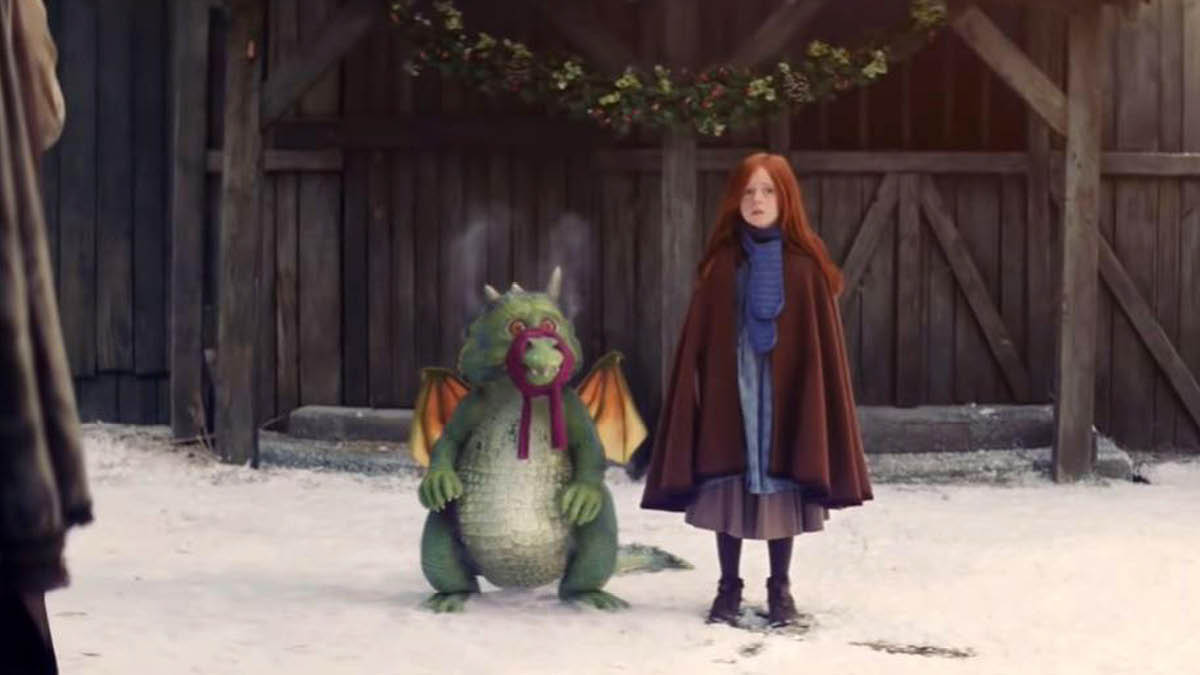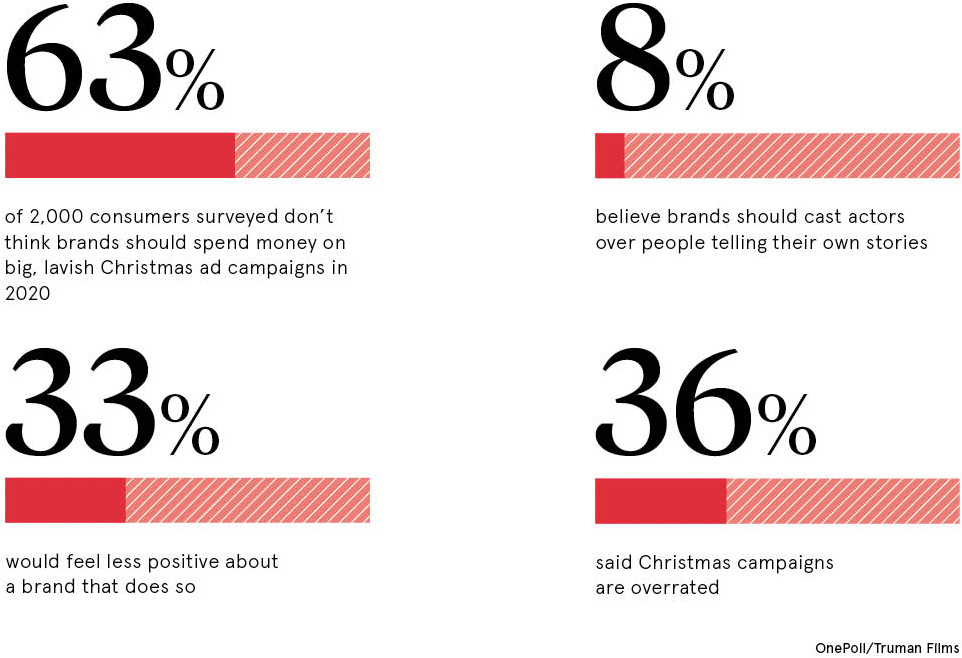
The prospect of a coronavirus-appropriate Christmas advert from a marketer famed for dragons, bears and unashamedly sentimental scripts isn’t one to warm the festive cockles. This isn’t any old Christmas advert though, it’s the John Lewis Christmas advert, a key barometer of the nation’s emotional mood for more than a decade and an annual marketing event all its own.
With the retailer still smarting from a £635-million pre-tax loss in the first half of 2020, scaling back the gold, frankincense and myrrh for a modernised brand purpose allied to wellbeing and sustainability is understandable.
Yet however poignant this year’s ad turns out to be - and many lay bets that it will succeed in hitting the spot once again - few doubt that among chief marketing officers (CMOs), Scrooge has vanquished Santa for this first COVID-19 Christmas sales period.
Navigating the potential banana skins lying in wait for brands that prove deaf to the country’s fast-changing mood music is tricky, agrees Chaka Sobhani, chief creative officer at Leo Burnett London. “You need to be acutely listening to the heartbeat of the nation and recognising that even though the world has changed, people need optimism in advertising,” she says.
“The national mood will continue to shift in the coming few weeks, but the spirit of Christmas will reappear and brands that can unite people and bring them hope will win.”
Navigating advertising “no-nos”
The impact of disruption to TV ad production schedules earlier in the year will play a key part in how big-name marketers present themselves in the holiday period. While some commercials are already in the can, more flexible attitudes among media owners are allowing others to be tweaked to suit as the countdown to Christmas begins.
Although it seems likely that a plethora of cheaper animations will fill the place of the top-dollar crowd scenes usually on show in the archetypal Christmas advert, the need to “tell great stories” will be more important than ever, says Matt Davis, executive creative director at Red Brick Road.
Being on the cusp of a huge recession means that anything which looks big budget, or pushing a sale too hard, is a no-no
“Acknowledging in your advertising that the world is upside down, rather than pretending everything is the same, is vital as is realising the situation is not going to change in the foreseeable future. Being on the cusp of a huge recession means that anything which looks big budget, or appears to be pushing a sale too hard, is a no-no.”
However, by shooting a variety of alternative endings to storylines and producing short cutdowns for social media, it is “still possible to stay one step ahead of any changes in the regulations [restrictions] between now and December”, he adds.
Is a Christmas advert still necessary?
Despite the second wave of COVID-19, Christmas remains a key sales period for brand owners, for whom choosing the right channel, tone and message must be a priority, says Sam Hawkey, chief executive at Saatchi & Saatchi.
While nostalgia for pre-COVID days, resignation to yet more disruption or even devil-may-care optimism could all be winning sales pitches in two months’ time, it’s more about being relevant and authentic, he believes.

“The danger is to wander into the ‘we’re here for you’ and ‘we understand it’s a tough time’ messages when that’s not a brand’s place,” says Hawkey. “Understand what your product delivers, bring it to life in a way that is true to the brand and make it Christmassy because, COVID or not, we all love Christmas.”
With perfect families plucked straight from central casting off the table for the time being, the way is clear for creative brains to dish up a more fitting alternative, argues Mel Arrow, head of strategy at BMB. “Given that it’s all about small gatherings this year, many of us will be nostalgic for those larger, often imperfect Christmases which involved more of the people we love or perhaps simply put up with because of the time of year.”
A Christmas advert which captures the complex feelings which a family Christmas can evoke will work better than what she calls “a truckload of Coca-Cola-style Santas, possibly masked and driving through heavy snow”.
Funny or emotive: getting the balance right
Cancelling Christmas altogether remains an option for CMOs severely feeling the pinch, yet not showing up when consumers will be almost literally a captive audience would be bad for business and would add to the general apocalyptic mood.
What about humour though? If it’s true that laughing through adversity is a British trait, is escapism and engagement through shared laughter a viable option in COVID-19?
Yes, says Davis at Red Brick Road, who cites a recent commercial for Yorkshire Tea in which contemporary office life is brilliantly lampooned via a social-distancing teapot.
“Not everyone can pull off this sort of humour because being funny is brand specific and the recent return to home working highlights the dangers in being behind the news, but making people laugh is as important as ever,” he says.
With the sound of the Thursday evening clap for the NHS still ringing in our ears, the role played by key workers looks certain to feature heavily this year, along with good neighbours and united communities.
What Arrow hopes we won’t see more of, however, are ads which can too easily be mistaken for ministerial pronouncements. “Real people talking at us through Zoom and earnest poems about separation are already the two most overused tropes in COVID-19,” she says.
If Christmas advert fashions ebb and flow, John Lewis’s unblinking focus on the role it plays in society reflects an ongoing and important debate throughout the marketing industry.
“Just before COVID, CMOs were getting to grips with the need to have a clearly defined brand purpose and, since the pandemic, this has come to the fore more than ever,” says Davis. “If a brand can demonstrate empathy this year and elicit an appropriate emotional response, its relevance and purpose will be clear.”
